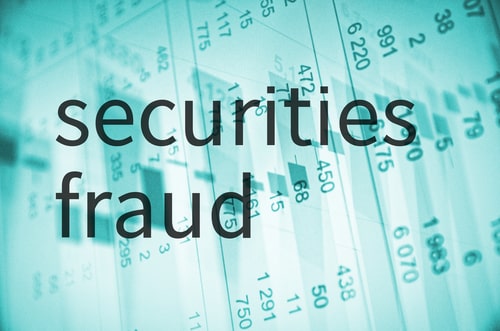The smart Trick of Securities Fraud Class Actions That Nobody is Talking About
Wiki Article
10 Easy Facts About Securities Fraud Class Actions Explained
Table of ContentsNot known Factual Statements About Securities Fraud Class Actions The Definitive Guide for Securities Fraud Class ActionsA Biased View of Securities Fraud Class ActionsSome Ideas on Securities Fraud Class Actions You Should KnowNot known Facts About Securities Fraud Class ActionsSome Known Details About Securities Fraud Class Actions
Lots of securities course activities will certainly contend the very least one acquired fit as a "tag-along" match. In 1998, Congress passed the Stocks Litigation Attire Standards Act (SLUSA) in an effort to close a technicality in the Personal Stocks Litigation and Regulatory Enforcement Reform Act of 1995 (PSLRA) that allowed complainants' legal representatives to submit national securities course activities in state courts.
Our litigators are experienced in attacking "demand futility" allegations made against a board. We have succeeded in obtaining remains of the fit or discovery, understand when to and when not to establish a special litigation committee, and how to avoid having the tail wag the dog relative to derivative lawsuits and securities class activities.
Examine This Report on Securities Fraud Class Actions
An individual investor that depend on the CEO's first declaration to purchase supply might sue the firm before Basic; what Standard enabled is for suits consisting of class activities to continue even if the filing a claim against financiers did not know concerning or directly trust the statement. The Court appears to have assumed assisting in class activities by doing this would certainly advance the twin objectives of anti-securities-fraud laws: target compensation and fraudulence deterrence.A crucial requirement of the assumption is that an alleged fallacy must have really had some effect on the cost of the security traded by the plaintiffs; or else, the plaintiff can not be stated to have actually depended on the fallacy, also indirectly. According to Basic, an accused can rebut the assumption by showing that there was no such cost influence, thus "cut [ing] the web link" between fallacy and cost.
In between 2002 and 2004, virtually fifty percent of all pending course actions in federal courts were safeties related. Another rise is currently underway. Since 2012, securities-fraud suits have gradually boosted yearly; most lately, there was a 7. 5% year-over-year increase in 2016 and an additional 15. 1% jump in 2017.
Everything about Securities Fraud Class Actions
The PSLRA increased pleading criteria and included several various other reforms; significantly, the original draft of the Act would certainly have gotten rid of the Basic assumption entirely. However, while the PSLRA did lower pointless suits somewhat, the proceeding surge in securities-fraud course actions recommends that extreme litigation stays a major trouble.
At a minimum, after that, there seems assistance in the courts, the academy, and the legislature for both (1) reducing down on meritless securities-fraud filings and (2) making sure that such instances, when submitted, do not endure the motion-to-dismiss or class-certification phases of litigation. A possibility to attain one or both of these objectives via judicial treatment occurred in Halliburton II.
Halliburton II: The High court's Feedback to the Rise Halliburton II noted the 2nd time that the long-running course activity versus Halliburton Co. for alleged protections fraudulence then in its thirteenth year had been prior to the Supreme Court. In 2011, the celebrations had actually clashed over whether complainants should verify loss causation prior to or after class accreditation.
The Facts About Securities Fraud Class Actions Uncovered

He thought an in contrast ruling would be weird due to the fact that the similar proof that accuseds would present to reveal that there was no price influence was currently admissible prior to class certification in order to respond to a part of the Basic anticipation. If the evidence failed to respond to that part of the assumption however did prove that there had actually been no cost influence, an area court would need to blind itself to this fact and accredit the course under the fraud-on-the-market concept, although the theory was plainly not suitable.
Halliburton did attempt to increase policy worries for instance, that securities-fraud class actions might "permit complainants to obtain large settlements. The Chief Justice stated that these types of worries were "extra appropriately addressed to Congress," pointing out that Congress had shown itself ready to react to "regarded misuses" of 10b-5 course actions by passing the PSLRA.
Getting The Securities Fraud Class Actions To Work
He would have overruled the Standard assumption, which in his sight has resulted in "an unrecognizably wide root cause of action ready created course accreditation" that is inconsistent with both the financial literary works and the Court's subsequent class-certification caselaw. Doubting that a possibility for pre-certification reply would certainly achieve much, Justice Thomas competed that as a functional matter rebuttal had actually so far confirmed almost impossible and would certainly continue to be so also if enabled before course accreditation.Analysts and typical sense alike recommended that by affording offenders a chance to defeat meritless insurance claims before a course was certified (and prior to the pressures to resolve ended up being frustrating), Halliburton II would permit those meritless insurance claims to in fact be defeated at a purposeful rate. This Component argues that Halliburton II's pledge was an impression and might have been recognized as such on the day that the decision was provided, for one straightforward reason: the price-maintenance concept.
Theoretically, the rate impact to be rebutted can appear in two means. The very first supposed "front-end" price influence is apparent: a misstatement can trigger a change in market expectations concerning a safety and security and cause an immediate swing in its cost. For instance, presume the marketplace expects a firm to earn revenues of $100, the company in fact does make $100, yet the CEO exists and reports profits of $125.
What Does Securities Fraud Class Actions Do?
Given that the marketplace's assumptions were fulfilled, the rate of the Going Here company's supply should remain stable at the pre-misrepresentation baseline. The price-maintenance concept holds that there is cost effect, since the misrepresentation avoided the market price from falling as it would certainly have if the Chief executive officer had actually told the reality. Here, too, inflation will certainly dissipate as soon as a restorative disclosure leads the market to incorporate the truth right into the marketplace cost.Instead, defendants have to reveal that none of the cost movement on the day of a claimed restorative disclosure was connected to the disclosure. This is an uphill struggle. There will certainly generally be some price activity on that date, due to the fact that complainants usually file 10b-5 matches in the wake of a significant rate modification alleging it was the outcome of a restorative disclosure.
Consequently, offenders typically can not convincingly reveal that none of the drop was associated with the restorative disclosure, and the price-maintenance concept if valid has made it beside impossible for offenders to rebut the presumption, even in meritless situations - Securities Fraud Class Actions. B. Plaintiffs' Invocation and Courts' Approval of the Price-Maintenance Theory There is little more inquiry that the theory is legitimate
Report this wiki page